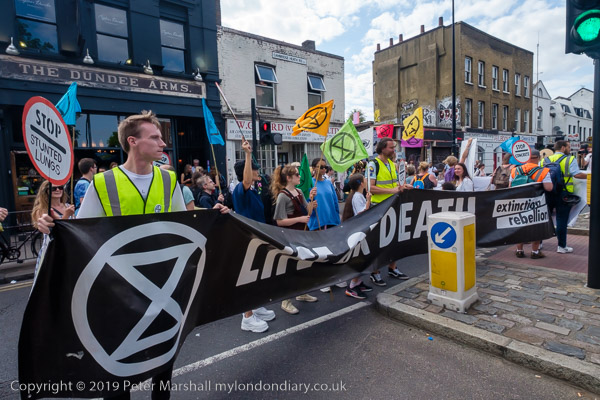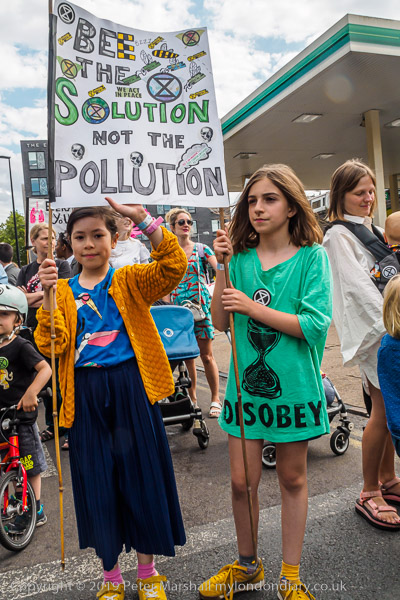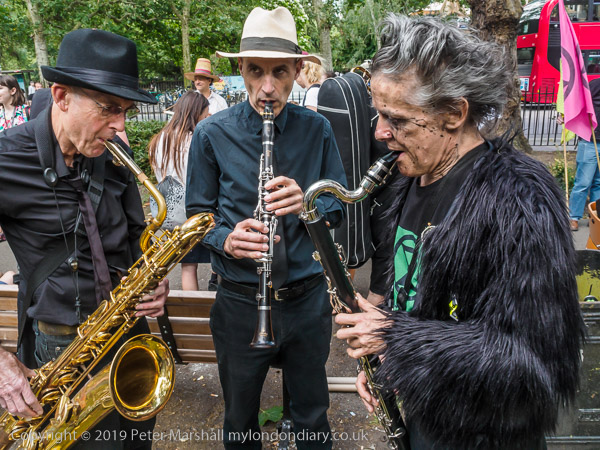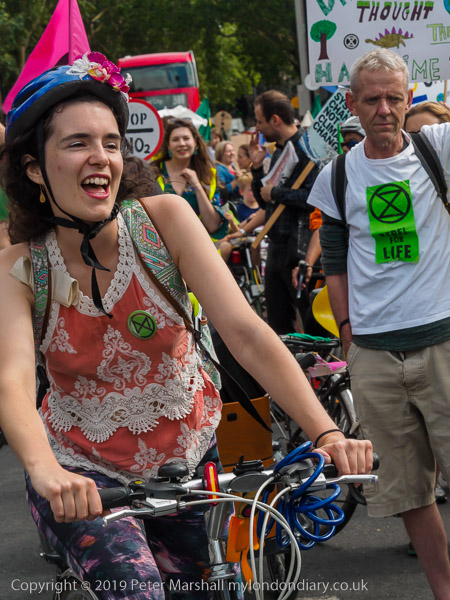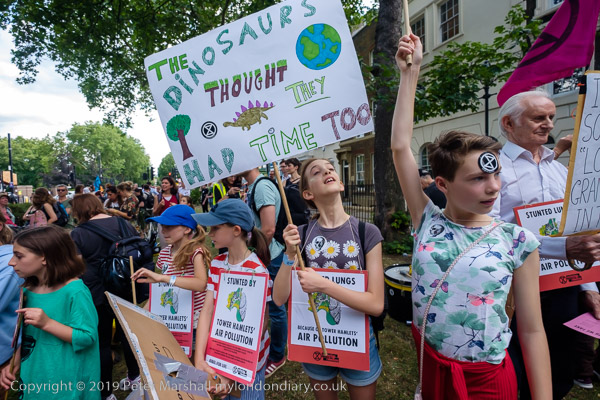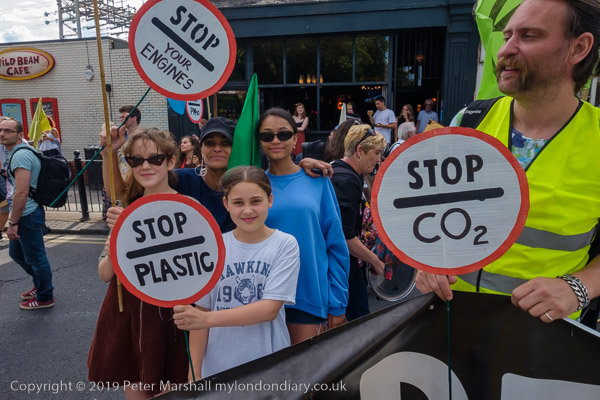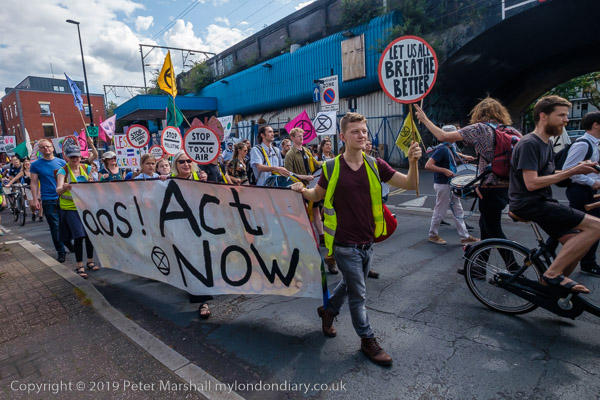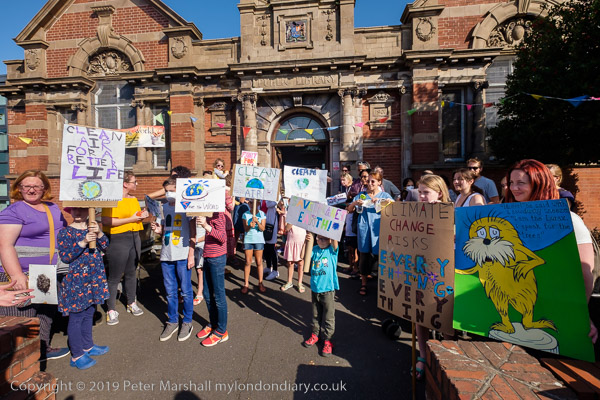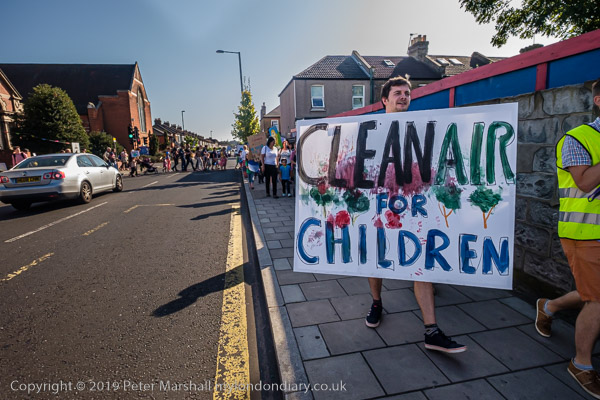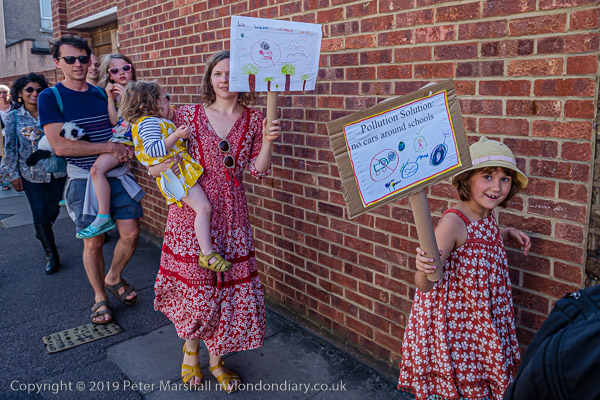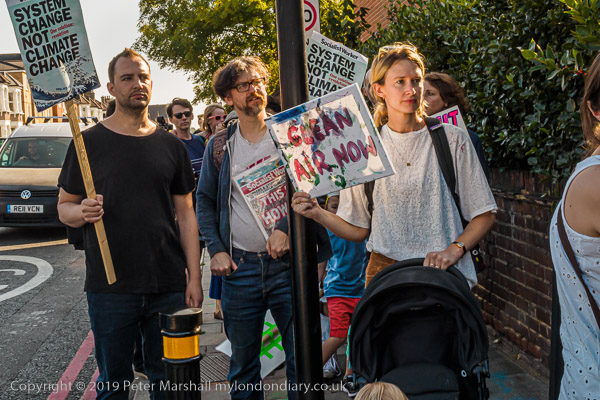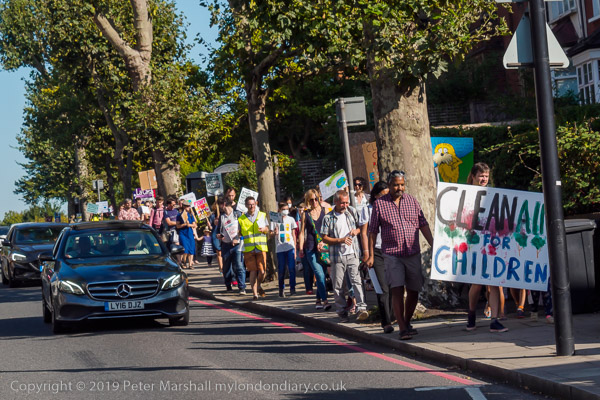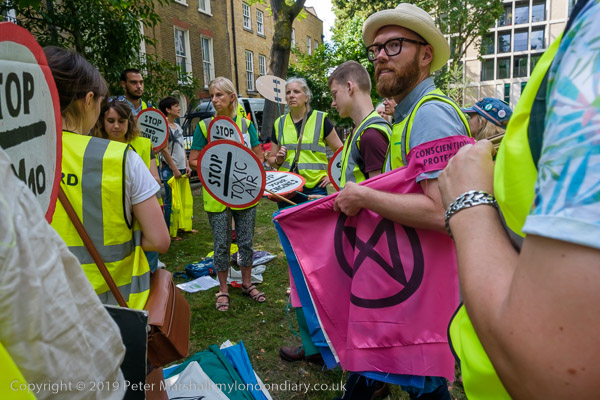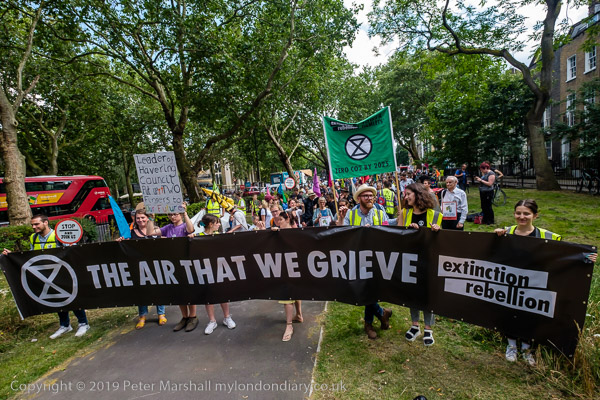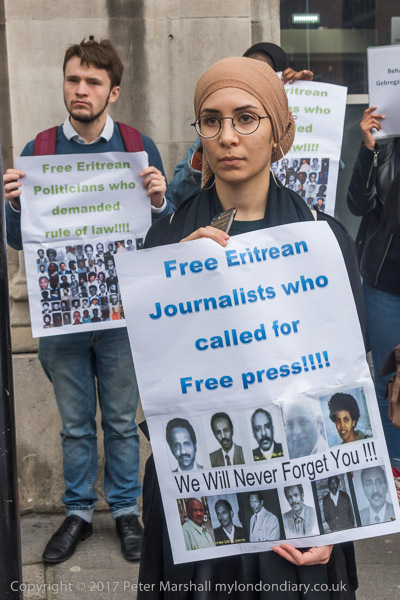
Most embassies are in the most expensive parts of London, with a large number around Belgrave Square and others in Mayfair. Eritrea’s is in Islington and I can only recall once having been to a protest outside it. There should be more, particularly by jounalists, as Eritrea, a one-party state ruled by presient Isais Afwerki since independence in 1993, has one of the worst human rights records and, according to Reporters Without Borders, has the worst press freedom in the world. In 2001 all independent media in the country were banned and politicians and ten leading journalists were arrested and thrown into isolation without charge, without trial and without contact with the outside world. Nobody knows their whereabouts and only four were thought to be still alive in 2017.
Those still alive are still in jail and have now been held for 20 years, along with other journalists imprisoned since then. Very little is known about most of them with no official information being released, other than government denials that some have been tortured, which are widely disbelieved. They are held in jails where torture is commonplace. In December 2020, 28 Jehohova’s witnesses, some of whom had been in jail for 26 years were released, raising hopes of the families of journalists, but there have been no further releases.
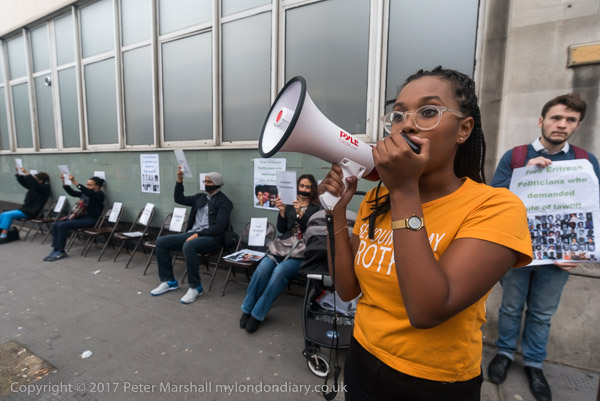
On Thursday 21st September 2017 there were 12 chairs set out at the protest across the street from the Eritrean Embassy, one four each of the journalists jailed in 2001, with photographs of them all. Protesters sat on four of the chairs, representing those thought still to be alive.
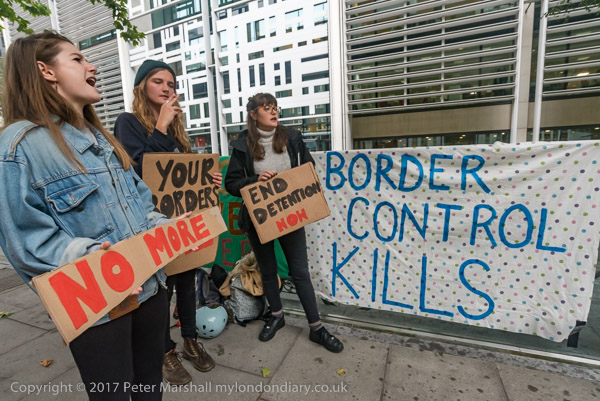
I went to another protest about deaths in prisons, this time in the UK. It was called at short notice after a Chinese man in Dungavel immigration detention centre. This followed the death earlier this month at Harmondsworth detention centre of a Polish man who took his own life after the Home Office refused to release him despite the courts having granted him bail. There have been thirty-one deaths in immigration removal centres since 1989.
Britain is the only EU country which holds refugees and asylum seekers to indefinite detention, and both official reports and media investigations have criticised the conditions at these immigration prisons. The protest outside the Home Office called for an end to immigration detention, which is inhumane and makes it difficult or impossible for asylum cases to be fairly assessed.
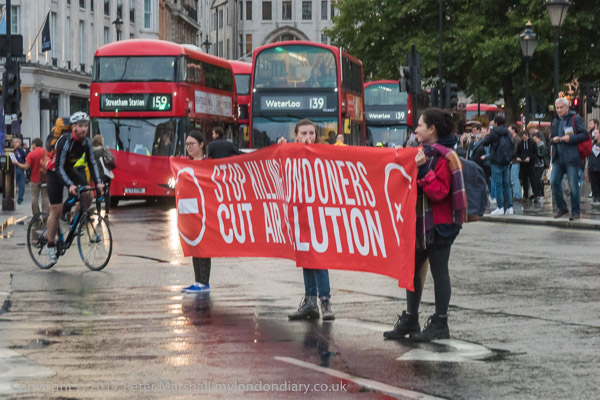
Stop Killing Londoners blocked traffic briefly in a carefully planned operation in Trafalgar Square, which involved the simultaneous stopping of traffic at all five entrances to the road system. As in previous events, it was a token block, holding up traffic for less time than it gets halted by congestion on some busy days, and around ten minutes after it began they moved off the road, returning a few minutes later for a short ‘disco protest’, dancing on the road on the east side of the square for a few minutes until police asked them to move.
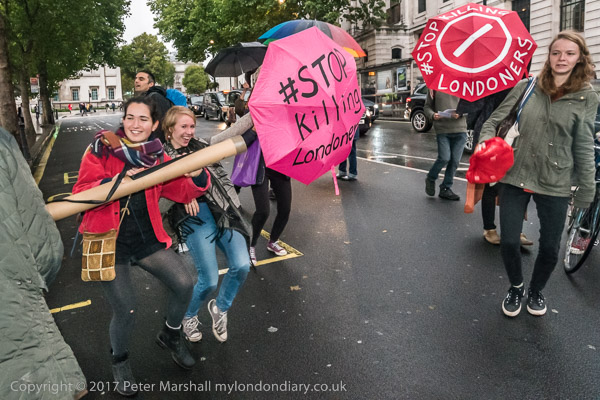
The protest was to publicise the illegal levels of air pollution in the capital which result in 9,500 premature deaths and much suffering from respiratory disease. It was one of a series of similar protests in various areas of London.
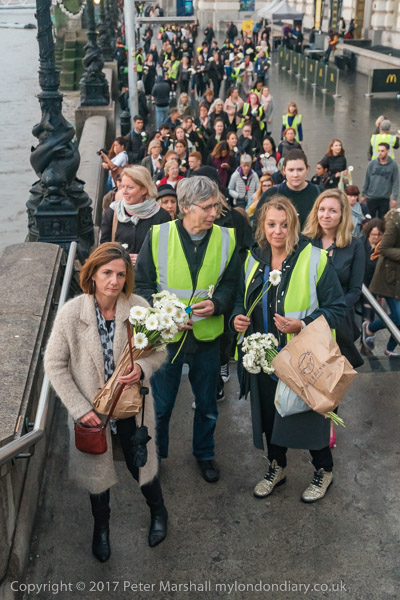
I hurried down from Trafalgar Square to Westminster Bridge, going across it just in time to meet the World Peace Day Walk as several hundred campaigners walk arrived having walked beside the Thames from Borough Market carrying white flowers. The London Peace Walk was one of a number takeing place in Barcelona, Paris and other cities around the world on World Peace Day.
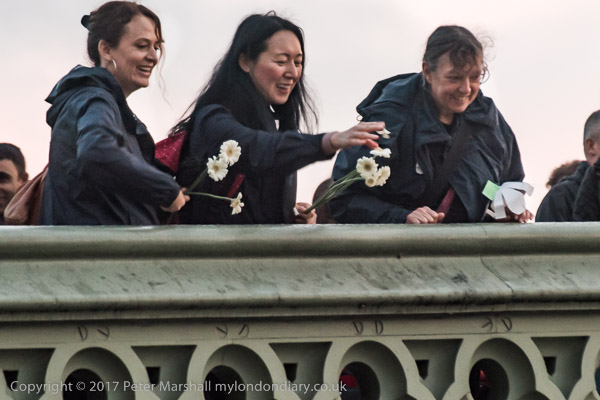
The marchers wore black and walked in silence to grieve for the recent loss of precious life due to violence in all forms, including terrorist, state, corporate, domestic. They stated that there can be no peace without justice, equality and dignity for all and that “We stand together against the forces of hate and division – for peace.” At the end of their march they went onto Westminster Bridge and threw flowers and petals into the Thames.
More at:
World Peace Day Walk
Trafalgar Square blocked over pollution
No More Deaths in immigration detention
Free forgotten jailed Eritrean Journalists
All photographs on this and my other sites, unless otherwise stated, are taken by and copyright of Peter Marshall, and are available for reproduction or can be bought as prints.

